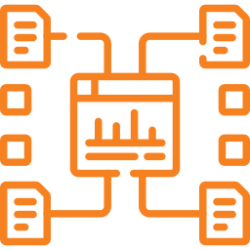Specialist knowledge is irreplaceable; it helps in driving innovation and problem-solving and builds credibility. But beyond a point, it can become limiting. As businesses grow in size and complexity, the ability to think beyond one’s domain becomes vital. Strategic leaders must join the dots between technical insights and fiscal outcomes, align their function with the company’s priorities and inspire the right decisions across various teams. Having an understanding of market undercurrents, handling stakeholders and making trade-offs across functions are becoming important skills more and more.
This change isn’t just about obtaining new skills only; it’s about shifting perspectives. It necessitates moving from implementation to enterprise-level thinking, from solving today’s problems to foreseeing tomorrow’s opportunities. Professionals who make this jump don’t just rise within their roles; they form the future of their companies. And increasingly, this combination of technical wisdom and business insight is what sets high-impact leaders apart.
When domain skills meet strategic demand
Many high-performing specialists often face a steep learning curve when transitioning into leadership roles. Their technical expertise, while important, may not completely prepare them to lead cross-functional projects that require a broader, more consolidative lens.
For instance, consider a senior engineer assigned to launch a new product in Southeast Asia. While they may shine at designing and creating the product, success in this expanded role pivots on understanding far more: competitive positioning in a fragmented regional market, pricing strategies tailored to local purchasing power, supply chain nuances, and navigating various regulatory and compliance scenarios.
Without fluency in these business-critical areas, the engineer risks making decisions in isolation, delaying go-to-market timelines, misjudging product-market fit, or failing to align with broader organisational strategy. Worse, they may struggle to gain buy-in from marketing, finance, or sales teams, who operate with entirely different KPIs and success metrics. In such scenarios, the gap is not one of aptitude or intent but of business acumen. Strategic impact demands the ability to think across silos, translate technical insight into business value, and influence outcomes across the organisation.
Business acumen is an essential leadership competency
Business acumen is the ability to understand how different parts of a company contribute to value creation. It includes strategic thinking, financial literacy, market insight, and change leadership.
A fitting example is General Electric (GE) under Jack Welch. When Welch became CEO in 1981, he realised that GE’s siloed divisions needed a unifying strategic direction. He introduced a rigorous performance-review system dubbed ‘rank-and-yank’ to foster accountability and emphasised cross-divisional growth, encouraging managers to rethink their business in the context of GE’s broader ecosystem. Under his leadership, GE doubled its market value and became a more agile, strategy-driven organisation, demonstrating that even engineers and technical leaders must think in business terms to drive impact.

Image credit: The Economist
Another example is Unilever’s transition to sustainable brands, where its senior employees were incentivised not just on volume but on ethical and environmental outcomes. To succeed, leaders across marketing, R&D and supply chain had to develop fluency in ESG metrics, consumer trends, and stakeholder expectations. The result was a portfolio of growth-focused, purpose-led brands aligned with changing consumer values.
These examples show that deep expertise can only take you so far; true leadership requires the strategic awareness to connect your function with the overall business purpose.

Image credit: Packaging Europe
Why informal learning falls short
While online courses and short workshops offer valuable insights and flexibility, they often fall short when it comes to building the kind of deep, applied capability that strategic leadership demands. These formats typically focus on individual learning in isolation, without the richness of real-time discussion, diverse perspectives, or mentorship. An individual might acquire new frameworks or tools but may struggle to translate them effectively into their day-to-day leadership context.
What’s often missing is contextual intelligence, the ability to read complex business situations, anticipate unintended consequences, and adapt frameworks to fit the organisation’s unique dynamics. Without structured peer dialogue, real-time case discussions, and faculty feedback, leaders may overestimate their readiness to act or miss blind spots altogether.
True leadership development doesn’t just involve learning new content; it requires wrestling with ambiguity, defending decisions, and learning from others who are navigating equally complex terrain. These are experiences that cannot be replicated by self-paced modules or one-off webinars.
Voices of transformation: What PGEMP alumni say
Leadership journeys are highly personal, but one theme remains constant throughout: the shift from functional expertise to strategic influence. Hear from a few PGEMP alumni who reflect on their transformation.

“The learnings from PGEMP helped me articulate my thoughts and contribute to the strategic think tank at L&T. The senior management looked at people who had done the programme as potential future leaders and encouraged them. The practice continues to this date.“
Laxmesh Hasanabadi, Vice President and Head, Aerospace Business, Larsen & Toubro Ltd. PGEMP, Batch 3.

“I took on the role of operations leader, leading a team of ~350 at the Cummins Pune Tech Centre. When I started, the centre had the lowest productivity at just 13%. Today, we have achieved global leadership with 65% productivity.“
Abhijit Phadke, Director, Lab & Test Operations, Cummins Tech Center India, Cummins Technologies India Ltd. PGEMP, Batch 14

“Defining a problem inaccurately inevitably results in solutions that fall short. I now have tools to help me define problems clearly and develop effective solutions.“
Ujjwalkumar Mane, Procurement Leader Group-9, CPO (Marketing), Bharat Petroleum Corporation Ltd. PGEMP, Batch 83
SPJIMR’s PGEMP: A strategic leadership bridge for working professionals
The Post Graduate Executive Management Programme (PGEMP) at SPJIMR is specifically designed for mid-career professionals seeking to build enterprise-wide impact without leaving their current roles. The programme is recognised for addressing the needs of working professionals aspiring to pursue an Executive MBA (EMBA).
Some of the key features of the programme include:

A modular format that integrates with work commitments

Curriculum spanning strategy, finance, marketing, and leadership

Peer learning across sectors, enabling diverse problem-solving perspectives

Applied assignments and live business projects are characterised by executive mentorship
PGEMP alumni report measurable career transformation. Several took on general management roles, led organisational redesigns, or spearheaded strategic initiatives. Effective leadership today requires both specialised expertise and enterprise-wide understanding. Among the many routes to develop this capability, structured programmes like SPJIMR’s PGEMP offer a clear path from functional depth to strategic breadth.





